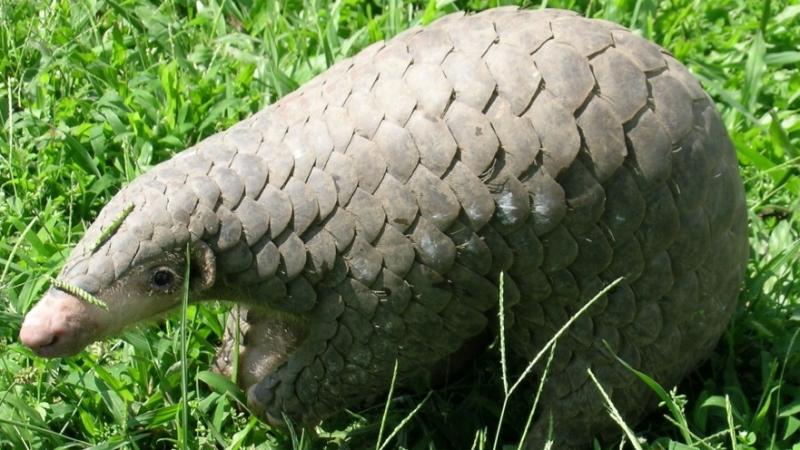
Pangolins, also called scaly anteaters, are nocturnal mammals found in parts of Asia and Africa. Thanks to reckless hunting all over the world, including in India, these beautiful creatures now have the unfortunate distinction of being the world’s most trafficked animal, sought after for their scales and meat. In recent times, the demand for pangolin scales from China and Vietnam, with unproven claims of medicinal properties, has resulted in large-scale illegal international trade with over a million individuals estimated to have been hunted between 2000 and 2013!
In a new study, researchers at the World Animal Protection and University of Oxford, UK, have analysed why some rural tribes in Assam hunt pangolins, the motivation behind this and possible interventions to stop hunting. Their findings were published in the journal Nature Conservation.
In India, two species of pangolins—the Indian pangolin (Manis crassicaudata) and the Chinese pangolin (Manis pentadactyla)—are seen in the Northeast. Although there is no information on the population status of these species, they are classified as ‘endangered’ and ‘critically endangered’. Although hunting or selling pangolins for commercial gain in India is illegal under the Wildlife (Protection) Act 1972, it is sometimes permitted outside protected areas for certain native tribal communities.
In the present study, the researchers investigated the involvement of rural hunters from Dima Hasao district of Assam in killing and trading pangolins. They surveyed 141 individuals from 31 villages belonging to the prominent tribes Biate, Dimasa and Karbi to know the extent of hunting and understand its underlying causes.
To their surprise, all those interviewed accepted that they had killed at least one pangolin between 2011 and 2016. “Our findings clearly demonstrate that rural male hunters, belonging to the Biate, Dimasa and Karbi tribes in Dima Hasao district, are carrying out pangolin hunting, both for personal and commercial gain”, say the authors. They found that nearly 95% of the surveyed hunters hunted at least one pangolin in the last 12 months, 27% reported having killed pangolins at least once in a month, and about 6% said they had hunted once a week.
However, why do these rural tribesmen target pangolins? It’s not for their meat but their scales, say the researchers. “Although pangolin meat is used locally, we found that hunters largely targeted pangolins for their scales”, they remark.
Killing a pangolin means a lot for a poor tribal hunter. The price of pangolin scales ranged between 10,000 and 20,000 INR per kg. “Our results suggested that commercial gain has supplanted traditional use as the primary driver for pangolin hunting. On average, each hunter captured one pangolin per year with the potential to earn Rs 9,000 for a single animal equating to approximately four months of their average income”, say the authors.
As expected, incessant hunting has resulted in a significant loss in pangolin population. Since the reproductive rate is very low, about one or two young per year, any level of hunting or habitat destruction are sure to affect pangolin numbers. The study notes that a majority of hunters, about 89%, stated that pangolins were less abundant than they were five years ago. Besides, peak pangolin hunting activity in Dima Hasao takes place between the months of March and May, which is when female pangolins give birth to their young. Often, the young ones are also taken away by the hunters, further denting the population.
Although alleviating poverty is a motivation for tribal hunters to go behind pangolins, the researchers say that reducing poverty alone may not be effective in reducing illegal and unsustainable wildlife trade in Dima Hasao.
“There is a need for coordinated packages of mutually reinforcing interventions to address pangolin hunting in a more comprehensive manner”, they say. They suggest that implementing a demand reduction strategy targeting urban consumers could help reduce the illegal trade involving pangolins.
The study highlights how unsustainable consumer demand for pangolin scales and associated illegal trade activity can permeate into remote rural communities that involve individuals who do not fully understand its actual ramifications, or even why the market exists. Perhaps it's now time for everyone to look beyond the scales and into the scale of this problem.





